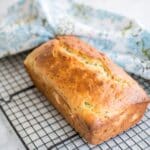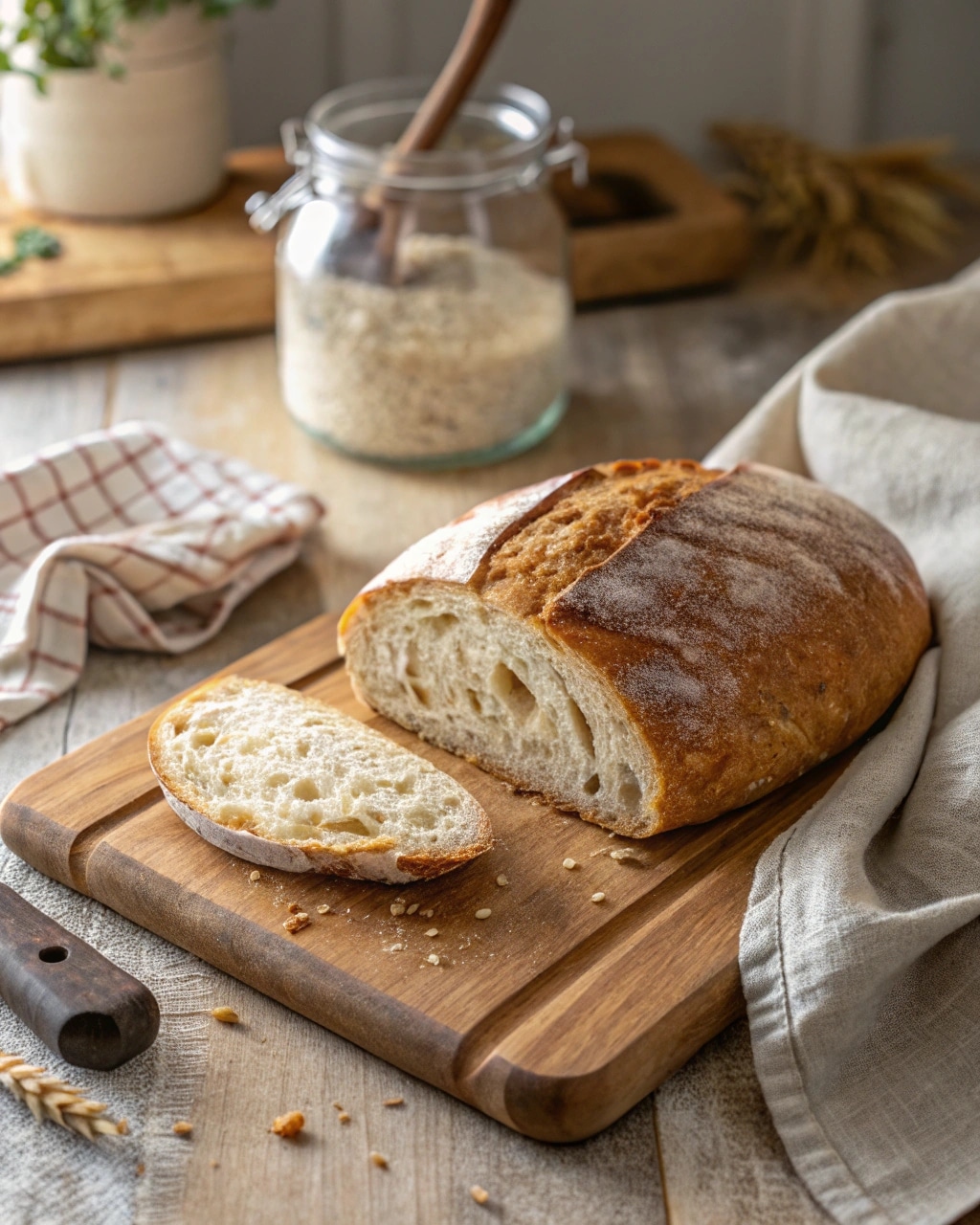
Sourdough Bread Recipe Without Starter – Naturally Easy and Honest
Making sourdough bread always felt like a slow dance with time. But when I moved to California and realized I didn’t have my grandmother’s starter with me, I had to get creative. This sourdough bread recipe without starter was born out of that homesick moment — and it turned out to be one of my favorite kitchen victories.
In Kyoto, I watched my grandmother measure rice, shape pickles, and gently wrap onigiri in seaweed, but she never measured love. Bread wasn’t part of our daily meals back then, but here in America, bread has become one of my most comforting canvases. This recipe is proof that you don’t need a 100-year-old starter to make delicious sourdough — just patience, good flour, and a cozy spot for wild yeast to work its magic.
We’ll walk through the ingredients, method, and tips to get that perfect crust and chewy center — all without a traditional starter. And yes, you can absolutely bake it in a regular loaf pan. Let’s make magic, one loaf at a time.
Ingredients for Sourdough Bread Without Starter
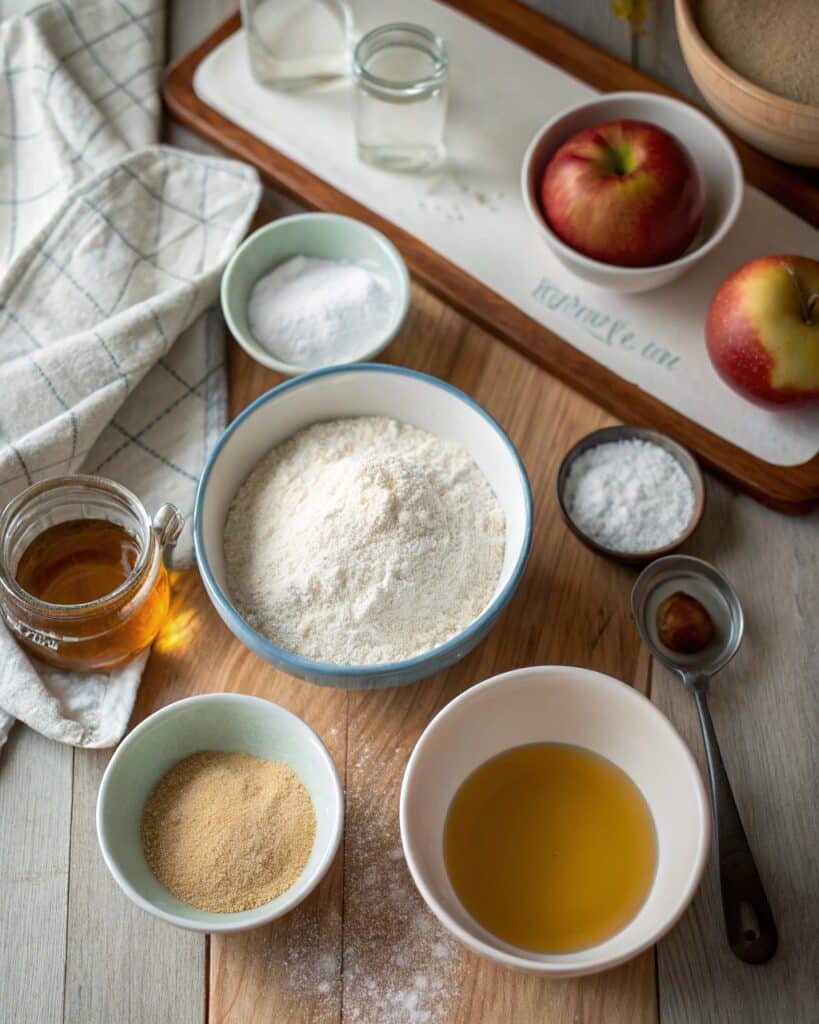
Simple Pantry Ingredients
Below are the exact ingredients you’ll need to create a naturally fermented sourdough loaf from scratch, no starter required. Instead, we’ll create a wild yeast culture right in the dough bowl.
| Ingredient | Amount |
|---|---|
| All-purpose flour | 3 cups (360g) |
| Whole wheat flour | ½ cup (60g) |
| Filtered water | 1½ cups (360ml) |
| Salt | 1½ tsp |
| Honey (optional) | 1 tsp |
| Apple cider vinegar | ½ tsp |
The mix of all-purpose and whole wheat flour helps create a more active fermentation process and deeper flavor. The vinegar helps boost acidity to mimic a mature starter, and the optional honey gives wild yeast a jump start.
This method also aligns with those using creative methods like cottage cheese-based breads when traditional ingredients aren’t available. We’ll be going fully from scratch using only dry ingredients and time.
Instructions – How to Make Sourdough Bread Without Starter
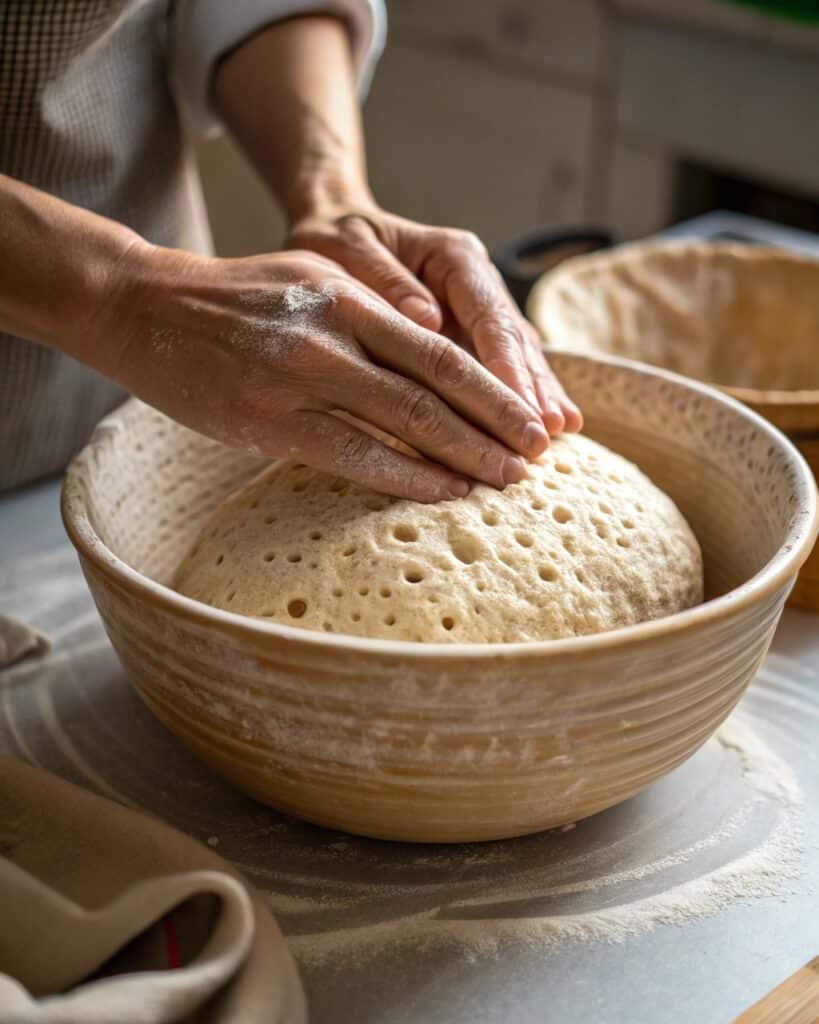
Building Natural Fermentation
This method creates a wild yeast culture directly in the dough — no need to maintain a starter. You’ll develop flavor over time, building fermentation with just flour, water, and patience.
Here’s how to make it step-by-step.
1. Mix the base dough (Day 1)
In a large glass or ceramic bowl, mix the all-purpose flour, whole wheat flour, and water. Stir until no dry bits remain. Cover loosely with a towel and let it rest at room temperature (around 70–75°F) for 24 hours.
2. Stir and feed the dough (Day 2)
The mixture should look slightly bubbly. Stir in the salt, honey (if using), and vinegar. Mix well until combined. Cover again and rest for another 24 hours. This stage encourages wild yeast to develop.
3. Begin stretch and folds (Day 3 Morning)
The dough should show visible signs of fermentation — bubbles, slight rise, and tangy aroma. With wet hands, perform your first set of stretch and folds: grab one side of the dough, pull it upward, and fold it over. Do this from all four sides. Let rest 30 minutes, and repeat stretch/fold twice more throughout the day.
4. Bulk ferment (Day 3 Night)
Cover the bowl and let the dough rise overnight at room temperature without disturbing it. This replaces a typical “bulk rise” done with active starter.
5. Shape and proof (Day 4 Morning)
Lightly flour your surface. Gently shape the dough into a tight ball or log (if baking in a loaf pan). Place in a floured proofing basket or loaf pan lined with parchment. Cover and let rise 3–4 hours, or until it slowly springs back when pressed.
6. Preheat oven and score
Preheat oven to 450°F (230°C). If using a Dutch oven, preheat it too. Use a sharp knife or razor to score the top of the dough so it can expand while baking.
7. Bake the bread
Transfer dough to the Dutch oven or place the loaf pan in the oven. Bake covered for 30 minutes, then uncover and bake for another 15 to 20 minutes until the crust is deep golden and crisp.
8. Cool completely before slicing
Place on a wire rack and let it cool at least 1 hour before slicing to finish setting the crumb.
This slow-fermented method, much like recipes that rely on clever adaptations like Cottage Cheese Cloud Bread, proves that homemade bread doesn’t need shortcuts or store-bought cultures. All it takes is patience and trust in the process.
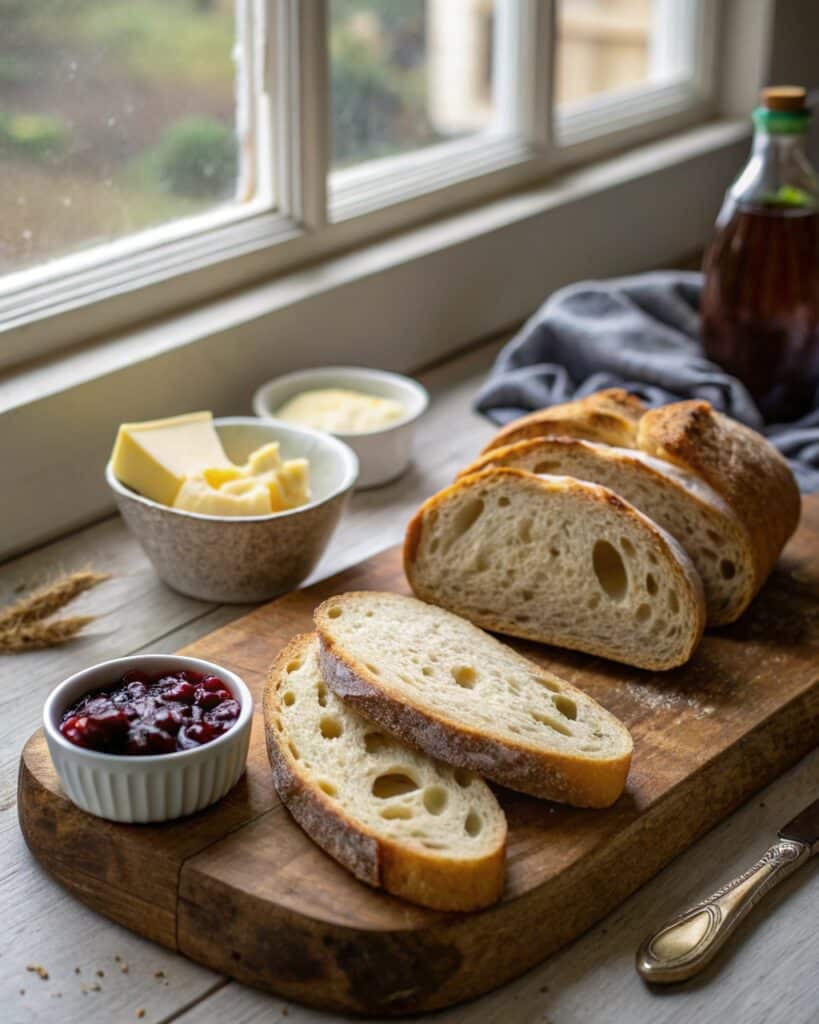
Serving Your Sourdough Bread Without Starter
Enjoying and Storing the Loaf
There’s nothing like slicing into a homemade sourdough loaf that took days of patient nurturing. The crust crackles under your knife, revealing a soft, chewy center with gentle tang. This bread pairs beautifully with almost anything — or nothing at all.
How to Serve It
This naturally fermented bread shines at every meal. Slice thickly for breakfast toast with soft butter or jam. I love serving it with a bowl of miso soup, or with a drizzle of olive oil and flaky sea salt. The loaf also makes a fantastic base for tartines, grilled cheese, or a rustic sandwich.
If you’re in the mood for bold flavor, top slices with whipped feta or roasted vegetables. For a sweet option, serve it with cinnamon-honey butter or cream cheese. You’ll find this bread’s tangy, balanced flavor works well even with spiced spreads, just like what I’ve done in my Ocean Spray Cranberry Bread Recipe.
Use a Regular Loaf Pan? Absolutely.
Yes, this sourdough can absolutely be baked in a regular loaf pan. Use parchment paper to keep the dough from sticking to the pan. It may rise a little less than a free-form boule, but it still creates an excellent crust and crumb. A loaf pan also makes neater slices — perfect for sandwiches or gifting.
Much like my Marble Rye Bread Recipe, using a pan helps create structured slices while maintaining softness.
Storing the Bread
To keep your loaf fresh, wrap it in a clean kitchen towel and store at room temperature for up to 3 days. Don’t store in plastic bags unless freezing, as they trap moisture and soften the crust. For longer storage, slice and freeze the bread in a ziplock bag. Toast slices straight from frozen when needed.
Reheat Tip
Pop a whole loaf into a 350°F oven for 8–10 minutes to refresh the crust — just like the day you baked it.
Nutrition – What’s Inside This Sourdough Bread Without Starter
A Healthier, Gentler Loaf
Sourdough made without a traditional starter still carries many of the same benefits — thanks to slow fermentation and wild yeast development. This recipe is perfect for those sensitive to commercial yeast or looking for a clean, minimalist loaf.
Here’s a breakdown of the approximate nutrition per 1 thick slice (based on 12 slices per loaf):
| Nutrient | Amount (Per Slice) |
|---|---|
| Calories | 150–170 kcal |
| Carbohydrates | 30g |
| Protein | 5g |
| Fat | 1g |
| Fiber | 2g |
| Sodium | 290mg |
| Sugar | <1g |
Low in Fat, High in Flavor
This bread contains minimal fat and no added oils, making it a great base for both sweet and savory toppings. It’s lighter than enriched breads like Bisquick Banana Bread or Cinnamon Donut Bread, but still deeply satisfying thanks to its chewy texture.
Easier to Digest
The long fermentation helps break down gluten and phytic acid, making nutrients more available and bread easier to digest. That’s why many people who can’t tolerate conventional white bread can enjoy slow-fermented sourdough. You’ll find a similar approach in gut-friendly options like Sourdough Cottage Cheese Pancakes, which blend culture with light ingredients.
Natural Probiotics
While baking does kill live bacteria, fermented sourdough still supports gut health by feeding beneficial bacteria already in your system — especially when paired with probiotic-rich foods like kimchi, yogurt, or miso.
Versus Commercial Yeast Bread
Unlike quick-rise loaves, this bread doesn’t spike blood sugar as fast due to its lower glycemic index. And since we avoid preservatives or refined sugar, it’s a cleaner, simpler bread — one that aligns with mindful eating.
Allergy Note
This recipe contains wheat (gluten). If you’re gluten-sensitive but not celiac, long fermentation may help — but always test cautiously or consult a healthcare provider. For gluten-free alternatives, check out nourishing recipes like Ezekiel Bread or Flourless Cottage Cheese Bread.
Frequently Asked Questions
Can sourdough bread be made without a starter?
Yes, it absolutely can. While traditional sourdough recipes rely on a starter, you can create natural fermentation directly in the dough over several days. This method builds wild yeast from scratch using just flour and water — no need to borrow or buy a starter.
Can you make sourdough with just flour and water?
Yes, flour and water are all you need to begin natural fermentation. These two ingredients create the environment for wild yeast and bacteria to develop. While optional additions like vinegar or honey can boost fermentation, they aren’t required. Just give it time.
Do you really need a sourdough starter?
Not necessarily. A sourdough starter is a convenient way to always have fermentation ready, but it’s not essential. With patience and the right environment, you can make sourdough from scratch each time — as we’ve done in this recipe.
sourdough bread can be baked in a standard loaf pan.?
Yes. This dough works well in a regular loaf pan lined with parchment paper. While a Dutch oven helps create extra steam and crust, a loaf pan is perfect for even slices, sandwiches, or gift loaves. Just preheat your oven thoroughly for best results.
Conclusion
This sourdough bread recipe without starter is a beautiful reminder that sometimes the simplest ingredients — flour, water, and time — create the most nourishing results. You don’t need fancy tools or heirloom starters. Just trust the process, feed your dough, and let nature do its quiet work.
It reminds me of what my grandmother always believed: cooking is love in motion. And this loaf, made slowly and intentionally, is one of my favorite ways to feel at home, wherever I am.
You might also enjoy experimenting with similar comforting recipes like Garlic Bread Pizza or Cranberry Walnut Bread for more flavor journeys. Until next time, may your dough rise high and your kitchen stay warm.
Print
Sourdough Bread Recipe Without Starter – Naturally Easy and Honest
5 Stars 4 Stars 3 Stars 2 Stars 1 Star
No reviews
- Author: Karino Kada
- Total Time: 72 hours 45 minutes
- Yield: 1 loaf 1x
- Diet: Vegetarian
Description
This sourdough bread recipe without starter uses just flour, water, and time. No need for store-bought culture – it’s a naturally fermented, crusty, chewy loaf full of homemade goodness.
Ingredients
3 cups all-purpose flour
½ cup whole wheat flour
1½ cups filtered water
1½ tsp salt
1 tsp honey (optional)
½ tsp apple cider vinegar
Instructions
1. Mix all flours and water in a large bowl. Cover and rest 24 hours.
2. Add salt, vinegar, and honey. Stir well. Cover and rest another 24 hours.
3. On Day 3, perform stretch and fold 3 times with 30-minute intervals.
4. Cover and bulk ferment overnight.
5. Shape the dough and proof 3–4 hours.
6. Preheat oven to 450°F. Score the dough.
7. Bake 30 mins covered, then 15–20 mins uncovered.
8. Cool completely before slicing.
Notes
Letting the dough sit for multiple days builds natural yeast.
Use a Dutch oven for extra crust, or a loaf pan for sandwich slices.
- Prep Time: 72 hours
- Cook Time: 45 minutes
- Category: Bread
- Method: Baking
- Cuisine: American
Nutrition
- Serving Size: 1 slice
- Calories: 160
- Sugar: 1g
- Sodium: 290mg
- Fat: 1g
- Saturated Fat: 0g
- Unsaturated Fat: 1g
- Trans Fat: 0g
- Carbohydrates: 30g
- Fiber: 2g
- Protein: 5g
- Cholesterol: 0mg
Karino Kada
I’m Karino Kada, a Japanese girl born and raised in Kyoto, where the heart of every home is the kitchen, and my grandmother always said that cooking is the purest form of love. Since I was little, I loved watching my mother shape onigiri with sea salt and gentle hands. Every recipe I learned brought me closer to my roots, to my story, to who I am. I share recipes that blend the comforting flavors of Japan with the fresh spirit of my life in America. I love creating








